

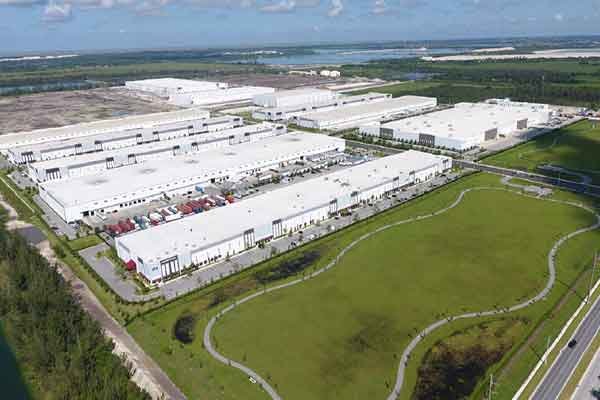
SCS Engineers and Florida East Coast Industries (FECI) are to be honored at the annual conference in Florida planned for August 2021. The firms will receive a 2021 Engineering Excellence Award by the American Council of Engineering Companies of Florida. The honor acknowledges SCS for the environmental engineering firm’s innovative design that integrates groundwater remediation with the stormwater management system on a 500-acre former landfill site. The design enabled the developer to remediate the former landfill into the Countyline Corporate Park in Southeast Florida.
Industrial real estate is in high demand, but former landfills and brownfields present environmental challenges that can become cost-prohibitive to redevelop without sound environmental expertise. FECI retained the professional services of SCS Engineers to provide consulting and design services addressing the environmental concerns preventing the transformation of a former landfill into a state of the art business park.
Environmental guidelines require 28% (or about 140 acres) of the site to be set aside for stormwater retention. The set aside would require the relocation of several thousand cubic yards of waste and prevent the 140 acres’ redevelopment. The estimated loss of $300 million in potential real estate sales, coupled with the groundwater remediation expense, made the site redevelopment cost-prohibitive. Unless resolved, the problem also impeded FECI’s corporate sustainability goals.
SCS’s experts in landfill design, closure, and remediation, developed a solution tying together the groundwater remediation and stormwater management systems. The integrated system allows for shallow aquifer recharge with stormwater and captures impacted groundwater at the site’s boundary. “We were able to provide an alternative design acceptable to all the permitting agencies, eliminating the need to set aside large areas for stormwater retention,” said Mr. Som Kundral, P.E., SCS’s senior project manager.
SCS’s remedial actions protect public health while opening the site for reuse. The project will be completed in phases. Phase I, consisting of 160 acres, is complete, with two million square feet of occupied businesses and a 30-acre community park. Development of the other three phases, which include another six million square feet, is underway.
The development will create hundreds of new jobs, deliver several hundred million dollars to the city and county tax base, and provide a 30-acre public park. “The engineering solution protects the environment while meeting FECI’s strategic, social, economic, and sustainability goals,” said Mr. Eduardo Smith, P.E., SCS’s senior vice president of client success.
Learn more about these related topics, events, and case studies at SCS Engineers:
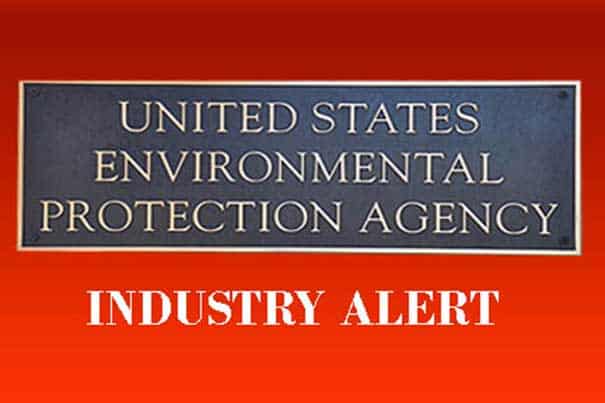
EPA is hosting a free workshop in January on landfill monitoring and emissions. The workshops are scheduled twice, over half-day sessions. These sessions will include presentations highlighting the latest technological developments for monitoring and measuring landfill gas emissions.
Dates and Times: Register once for both sessions.
If you have any questions, please contact Shannon Banner at or John Evans at .
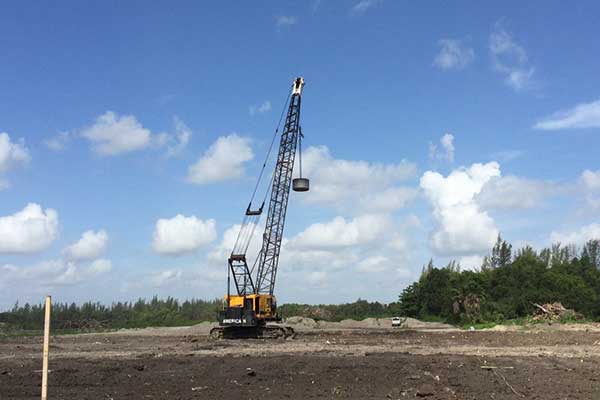
As large tracts of geographically desirable vacant land become scarcer, residential and commercial property developers are increasingly turning to old landfills or former dumps. However, such redevelopment is complex and rife with uncertainties. When compared to greenfield development, the land acquisition costs are lower. Still, any savings are typically offset by greater environmental and infrastructure costs associated with the foundation, landfill gas management, stormwater management, groundwater impacts, meeting closure requirements, and multiple regulatory agency coordination. Therefore, it is important to maximize the developable area while providing engineering solutions to make the project economically feasible. In this blog, we identify some options to reuse challenging sites and lessons learned to contribute to successful redevelopment projects.
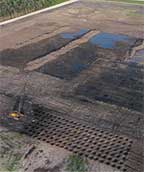
Deep Dynamic Compaction
Old landfills or dumps present some unique soil stability challenges. Deep dynamic compaction (DDC) is a ground stabilization technique that has gained popularity in recent years to improve subsurface soil conditions. DDC involves dropping 6 to 30-ton weights from a height between 30 and 75 feet to achieve the desired soil compaction. DDC can effectively apply to a range of subsurface materials, including former C&D debris or municipal solid waste dumps.
DDC provides a stable foundation for future development, minimizes differential settlement while leaving the landfill waste in place, and eliminates the costs associated with removing, transporting, and disposing of buried waste, costing millions of dollars. For simplicity’s sake, let’s consider a 1-acre old landfill or a dumpsite with an average of 15 feet of waste. If excavating the waste and replacing it with clean fill, the disposal fee costs for the excavated waste alone could exceed $400,000. Alternatively, DDC costs range from $1.50 to $2.00 per square foot or $65,000 to $87,120 per acre, excluding mobilization, which costs around $30,000.
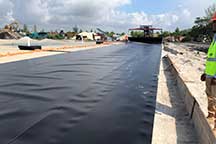
Gas Mitigation Systems
Constructing buildings on top of dynamically compacted areas generally requires a combustible gas barrier layer below the building foundation to manage subsurface combustible gases (typically methane). The barrier is required because the waste remains in place. In its simplified form, gas mitigation systems include:

These gas mitigation systems can be either a passive or an active system with a blower. The cost of such systems varies depending on the size of the building, location, and type of liner system used. Typical capital costs for passive systems are in the range of $7 to $9 per square foot for the spray-applied liner and $3 to $4 per square foot for the HDPE liner. For an active system using blowers, add $3 to $4 per square foot. The designer configures a system from these options to address the client’s risk preference and considering future tenant preferences.
Using innovative approaches, impaired lands are increasingly attractive to developers. Beyond the cost-saving benefits to developers realized through DDC and an appropriate gas mitigation system, such projects also create local jobs, increase the tax base, and protect public health and the environment.
About the Authors:
 Somshekhar Kundral – Mr. Kundralis, PE, is a Senior Project Manager with over 12 years of broad and diverse environmental engineering experience that includes projects in landfill redevelopment, landfill gas management system design, site assessment, groundwater remediation system design, stormwater management, and injection well system construction. Som is experienced with site permitting, compliance reporting and construction administration services, and remediation systems’ operation and management.
Somshekhar Kundral – Mr. Kundralis, PE, is a Senior Project Manager with over 12 years of broad and diverse environmental engineering experience that includes projects in landfill redevelopment, landfill gas management system design, site assessment, groundwater remediation system design, stormwater management, and injection well system construction. Som is experienced with site permitting, compliance reporting and construction administration services, and remediation systems’ operation and management.

Maura Dougherty is joining SCS’s Southwest Business Unit as a Senior Project Manager in the solid waste engineering practice. Dougherty will execute engineering design, operations support, and construction quality assurance projects. She is responsible for project management, client service, business development, technical leadership, and overseeing professional staff teams. Dougherty reports to Vice President and Southwest Business Unit Director of Engineering, Vidhya Viswanathan, P.E., from SCS’s Pleasanton office.
“Maura is a senior professional with proven extensive success in solid waste engineering, construction, and construction quality assurance solutions,” said Viswanathan. “Her experience managing landfill and landfill gas collection and control system engineering and construction projects strengthen our efforts to support our solid waste and recycling clients.”
Dougherty is a registered Professional Engineer in California, Oregon, Washington, and Hawaii. She brings over 20 years of experience overseeing landfill engineering and construction projects, coordinating with regulatory staff, conducting design and technical reviews, and supporting construction work. Dougherty earned her B.S.E. in civil engineering at the University of Princeton and her M.S. in environmental engineering from U.C. Berkeley.
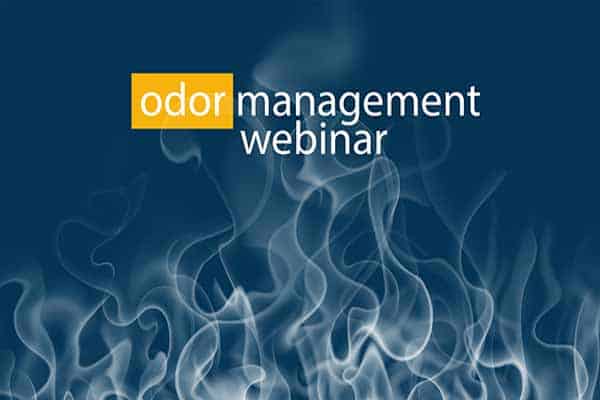
Register for SCS Engineers’ January webinar to learn more about the proactive strategies and practices you can implement at your critical solid waste facilities. This free webinar will help you develop capabilities to assess the potential for odor issues and, by doing so, set realistic benchmarks toward cost-effective and meaningful mitigation measures.
DATE: Thursday, January 21, 2021 TIME: 2 p.m. ET
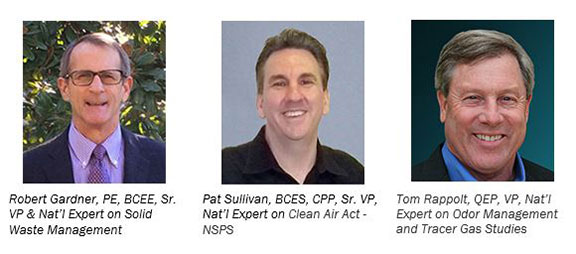
Our panelists bring comprehensive expertise to the table, including facility design and planning, technical experience in air quality compliance and pollutant dispersion and air measurement programs, atmospheric dispersion and transport of airborne pollutants, particularly in the area of complex terrain. They will provide decades of strategies, resources, and best practices and technologies based on successful solutions that help support your facility as you prepare for, and likely will, experience odor complaints.
The team answers questions throughout the presentation, and the second portion of the program is devoted to Q&A and idea exchange.

State regulatory agencies normally require landfill slopes reaching final grades to close within a certain period. This requirement leads to closing landfill slopes in phases, normally referred to as partial closure. Generally, partial closures start from the bottom of the landfill slope up to a certain elevation, with geosynthetics in the final cover temporarily anchored along the partial closure’s sides and upper boundary. Engineers propose different designs for securing the lower boundary of partial closures at the bottom of the landfill slope. Some engineers propose an anchor trench outside the bottom lining system anchor trench to secure the final cover geosynthetics. Others specify welding the cover geomembrane to the bottom lining system geomembrane.
Experience with anchor trenches at the bottom of the landfill slope for the final cover geosynthetics has not been positive because of these issues:
To eliminate the issues above, engineers weld the final cover geomembrane to the bottom lining system geomembrane for cases when there is a bottom lining system below the waste. The welding completely seals the landfill interior space from the outside environment and keeps regulated materials, such as waste, leachate, and gas, within the sealed system. Of course, the engineer should design proper means to address these behind the sealed system; designs may include:
Leachate toe drain system is a concept originally developed by SCS and incorporated into landfill final cover designs over the past 20 years. Unfortunately, many solid waste engineers are unaware of the need for LTDS, so their designs lack this important feature. LTDS saves a tremendous amount of repair money in the long run by avoiding complications for landfill operators.
A rainwater toe drain system removes water that moves laterally within the final cover geocomposite toward the slope’s bottom. The RTDS includes a perforated HDPE pipe encased in gravel and wrapped in geotextile. Also, install the RTDS on terraces along the depression on the interior side of the terrace. Along the landfill slope’s bottom, position the RTDS behind a HDPE flap welded to the final cover geomembrane. The RTDS is sloping with high and low points along the RTDS alignment. Lateral drain pipes located at low points remove water from the RTDS to the perimeter ditches.
Other designs involving extending the geocomposite to daylight at the slope surface cause problem such as those listed below:
Similar issues can also occur at the outlet of such systems on landfill terraces, making the RTDS a superior design.
About the Author:
 Ali Khatami, Ph.D., PE, LEP, CGC, is a Project Director and a Vice President of SCS Engineers. He is also our National Expert for Landfill Design, Construction Quality Assurance, and Elevated Temperature Landfills. He has over 40 years of research and professional experience in mechanical, structural, and civil engineering.
Ali Khatami, Ph.D., PE, LEP, CGC, is a Project Director and a Vice President of SCS Engineers. He is also our National Expert for Landfill Design, Construction Quality Assurance, and Elevated Temperature Landfills. He has over 40 years of research and professional experience in mechanical, structural, and civil engineering.

On November 30, 2020, the Environmental Protection Agency announced it is aggressively addressing per- and polyfluoroalkyl substances (PFAS) in the environment. The agency announced two steps that it states would help ensure that federally enforceable wastewater monitoring for PFAS can begin as soon as validated analytical methods are finalized.
First, EPA issued a memorandum detailing an interim National Pollutant Discharge Elimination System (NPDES) permitting strategy for addressing PFAS in EPA-issued wastewater permits.
EPA’s interim NPDES permitting strategy for PFAS advises EPA permit writers to consider including PFAS monitoring at facilities where these chemicals are expected to be present in wastewater discharges, including from municipal separate storm sewer systems and industrial stormwater permits. The PFAS that could be considered for monitoring will have validated EPA analytical methods for wastewater testing. The agency anticipates being available on a phased-in schedule as multi-lab validated wastewater analytical methods are finalized. The agency’s interim strategy encourages the use of best management practices where appropriate to control or abate the discharge of PFAS and includes recommendations to facilitate information sharing to foster adoption of best practices across states and localities.
Second, EPA released information on progress in developing new analytical methods to test for PFAS compounds in wastewater and other environmental media.
In coordination with the interim NPDES permitting strategy, EPA is developing analytical methods in collaboration with the U.S. Department of Defense to test for PFAS in wastewater and other environmental media, such as soils. The agency is releasing a list of 40 PFAS chemicals that are the subject of analytical method development. This method would be in addition to Method 533 and Method 537.1 that are already approved and can measure 29 PFAS chemicals in drinking water. EPA anticipates that multi-lab validated testing for PFAS will be finalized in 2021. For more information on testing method validation, see https://www.epa.gov/cwa-methods.
EPA continues to expand its PFAS Action Plan to protect the environment and human health. To date, it has assisted more than 30 states in helping address PFAS, and the agency is continuing to build on this support. Across the nation, the EPA has addressed PFAS using a variety of enforcement tools under SDWA, TSCA, RCRA, and CERCLA (where appropriate), and will continue to protect public health and the environment.
The agency is also validating analytical methods for surface water, groundwater, wastewater, soils, sediments, and biosolids; developing new methods to test for PFAS in air and emissions; and improving laboratory methods to discover unknown PFAS. EPA is developing exposure models to understand how PFAS moves through the environment to impact people and ecosystems.
Related Information
This blog references information issued from the US EPA, Office of Public Engagement.
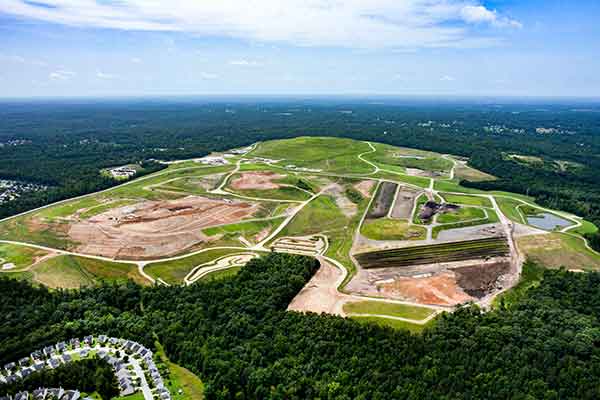
It is not out of the ordinary to see several different landfill designers providing services at a specific site over many years. Each landfill designer brings his/her preferences and designs to the owner, depending on the urgency of the projects and the owner’s willingness to accept new concepts.
Experienced landfill designers review the prior history of design work at the facility and ensure that their new design work is compatible with previously developed cells and final covers. Lack of such due diligence could impede landfilling operations following implementation of the design with implications that may survive for many years to come at a high cost to the owner.
Proper due diligence may reveal issues that the owner may not be aware of. In such cases, the new landfill engineer attempts to explain the observed issues from a previous design to the owner’s attention during one or more meetings or through a narrative report including documentation of the issues and measures to address each issue. The owner may accept or reject the technical matters brought to their attention by the new landfill designer. If accepted, authorize the new design engineer to prepare proper plans and details, and assist in retaining a contractor to fix noted problems. If rejected, the new landfill engineer can feel confident he/she is professionally conducting himself/herself considering the ethical obligations in his/her profession.
If the new landfill engineer had not brought up issues discovered during the due diligence, the owner could blame the new designer claiming that he/she should have known better. Such situations do not get resolved easily and could lead to another change in the design team.
The cost of performing thorough due diligence may not be in the first task order’s budget. However, it will certainly pay off over time with back-to-back task orders from the owner when confidence n the designer’s capabilities build over time.
Changes to the landfill personnel may occur similar to any other organization. Landfill general managers, operation managers, site engineers, or compliance engineers may leave, and the position filled by a new person who has no site familiarity or history. These types of rotations can provide the opportunity for inexperienced landfill designers to influence the site’s long-term plans. Mistakes by inexperienced designers can last decades in some instances, while new and remaining personnel must deal with the consequences.
SCS’s project management protocols require project managers to constantly learn about the site’s history and review documents representing the backbone of the facility development over the long-term life of the site to the present. This type of continual learning of important matters and minute nuances of the site history equips a project manager to address technical and permitting issues based on knowledge of prior work performed at the facility. Implementation of new ideas based on prior knowledge of the site history is considered the backbone of properly managing projects and serving the client in consideration of their business priorities.
Past knowledge comes from documents prepared by prior designers and knowledge of site personnel who have been working at the site for a long time. Competent engineers welcome opportunities to interview and discuss site history, especially with long-term site personnel. The knowledge these people carry with them is not found in any document that the designer, if lucky enough to get his/her hands-on, may obtain by review. The knowledge of the changes to existing systems during original construction and a later date, which may not have been documented, can lead the engineer to concepts that otherwise would not have been envisioned without the long-term employee’s information of the site.
About the Author:
 Ali Khatami, Ph.D., PE, LEP, CGC, is a Project Director and a Vice President of SCS Engineers. He is also our National Expert for Landfill Design, Construction Quality Assurance, and Elevated Temperature Landfills. He has over 40 years of research and professional experience in mechanical, structural, and civil engineering.
Ali Khatami, Ph.D., PE, LEP, CGC, is a Project Director and a Vice President of SCS Engineers. He is also our National Expert for Landfill Design, Construction Quality Assurance, and Elevated Temperature Landfills. He has over 40 years of research and professional experience in mechanical, structural, and civil engineering.
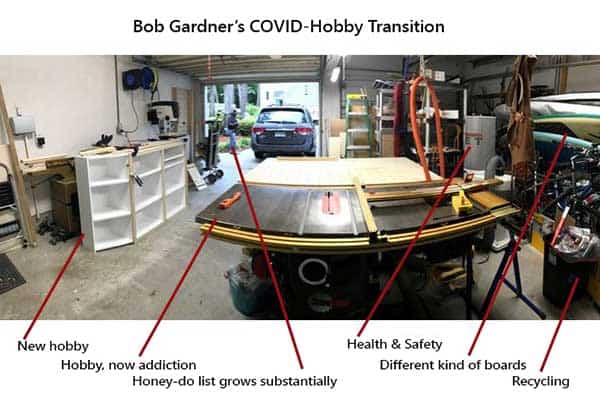
So the last ten months have been different, to say the least. As many of you know, normally I’m traveling somewhere every week. Such has not been the case since February/March when I last traveled to San Diego and Reston. I’ve only traveled by car to two places since the pandemic began. I have not worked in an office since February. Within one week of all the shelter in place orders issued in California, SCS Engineers transitioned its entire office workforce to working from home. Our Field Staff and other essential workers continue performing services outside of the office and with PPE and social distancing.
I have never really perceived the stress of traveling all the time, but being home has been relaxing and therapeutic in a way. I eat lunch almost every day with Carole, my wife. We often watch something educational during lunch or just talk. I’ve been able to watch the sunrise almost every day. I observe the daily ebb and flow of life from my “home office,” which faces the front of my house. From there, I keep tabs on all things solid waste throughout SCS and the country. I watch my neighbors walk their dogs and stroll together, and the hordes of kids on their bicycles flying around the neighborhood.
I have walked almost 3 miles every day for the last six months, enjoying the morning solitude, quietness, and seasons’ changing. I’ve watched all kinds of YouTube videos, mostly woodworking, and taught myself how to use Fusion 360.which is a 3D AutoCad program from AutoDesk.

Since the beginning of the pandemic, I’ve spent a lot of time after work and on weekends in my woodshop. I’ve thoroughly enjoyed this diversion. I’ve designed and built several fairly ambitious projects, the biggest ones being a set of workshop cabinets (tops and bottoms) with 20 drawers, cabinets for my daughter and son-in-law, a large mobile workbench for my woodshop, a bunk bed for my grandkids, and a new desk that I’m finishing now. I’ve learned that Amazon is a dangerous thing because it makes it way too easy to buy new tools and gadgets to support my woodworking habit. I’ve had fun talking with other SCSers and clients who share a passion for woodworking as well.
We were fortunate to have my daughter Christine, her husband Chris, and three of my grandchildren (Frankie, Robert, and George) with us this summer for nearly a month, which was fun and chaotic. We miss our West Coast contingent, Paul (my son), Lindsay (daughter-in-law), Austin, and Julia (our two other grandchildren). They moved to Bellevue, Washington, right at the beginning of the pandemic, where my son took a job with Amazon as an optical-mechanical engineer. Since March, we haven’t seen them in person; however, we do FaceTime with them almost every day.
I’ve learned to wear a mask, keep six feet of separation, use Microsoft Teams, Zoom, Google Talk, LifeSize, and Webex. We continue to keep work, family, and friends together using these tools, which has been good.

This whole situation does wear on me from time to time, but I keep telling myself, this is just like walking those three miles each day, one foot after the other. There are so many people struggling now; my situation is blessed. My family, SCS, and my friends are doing everything we can to ease their burden. Hopefully, the end of this pandemic is in sight. Until then, we find ways to manage, help others, and stepping out of our normal routines helps us grow.
Merry Christmas,
Bob Gardner, Sr. VP SCS Engineers
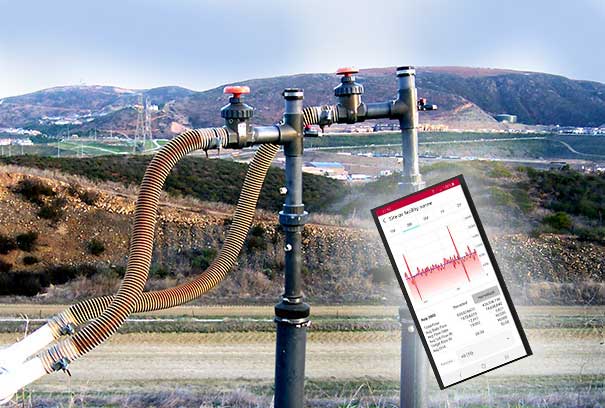
SCS Engineers’ newest environmental technology application is for use at solid waste facilities and landfills. These sites require specific monitoring and analyses of groundwater and liquids, landfill gas – LFG, and surface emissions critical to facility infrastructure and the environment.
 “We work side-by-side with our clients at hundreds of facilities nationwide. SCS MobileTools® supports operating decisions, whether our client is managing one site or hundreds,” states Pete Carrico, senior vice president and assistant director of SCS Field Services.” The App’s interface gives clients quick access to information that drives critical operating decisions and provides data for corporate directives and landfill gas OM&M programs for regional or national operations.
“We work side-by-side with our clients at hundreds of facilities nationwide. SCS MobileTools® supports operating decisions, whether our client is managing one site or hundreds,” states Pete Carrico, senior vice president and assistant director of SCS Field Services.” The App’s interface gives clients quick access to information that drives critical operating decisions and provides data for corporate directives and landfill gas OM&M programs for regional or national operations.
SCS MobileTools® is the iOS and Android mobile interface for the SCSeTools® platform. Access to data to make informed decisions is especially valuable when technicians are in the field, or operators are working remotely. Landfill and solid waste facility owners, operators, and technicians use the new application to observe system and environmental activity securely and in real-time on a mobile phone or device.
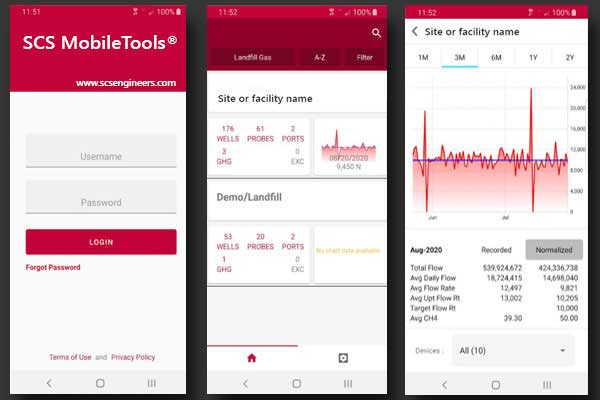
Featuring state-of-the-art technology, SCS MobileTools® provides users the ability to interact with a site or facility data, including site-specific monitoring and exceedance metrics for landfill gas, liquid levels, and surface emissions. Responsive, touch-enabled flow data charting is accessible, illustrating flow targets, reading dates, flow rates, and historical flow data analysis.
When compared year-over-year, generation and disposal trends produce information critical to assessing optimal options and solutions that represent significant savings for landfill gas Operations, Maintenance & Monitoring – OM&M programs. For this reason, the savings compound for regional or national operators.
For instance, monitoring and analyzing landfill gas generation and collection data against modeled estimates are valuable information. SCS MobileTools® handles the input, analysis, review, and export of landfill gas flow and related information, specifically flow rates, impacts on gas collection (e.g., extraction well liquid levels), and analytical data for data collection points.
In SCS’s release pipeline, SCS MobileTools® will include mapping and visualization functions in early 2021. SCS MobileTools® is available for download on the Apple App Store for iPhones and iPads, Google Play for Android.